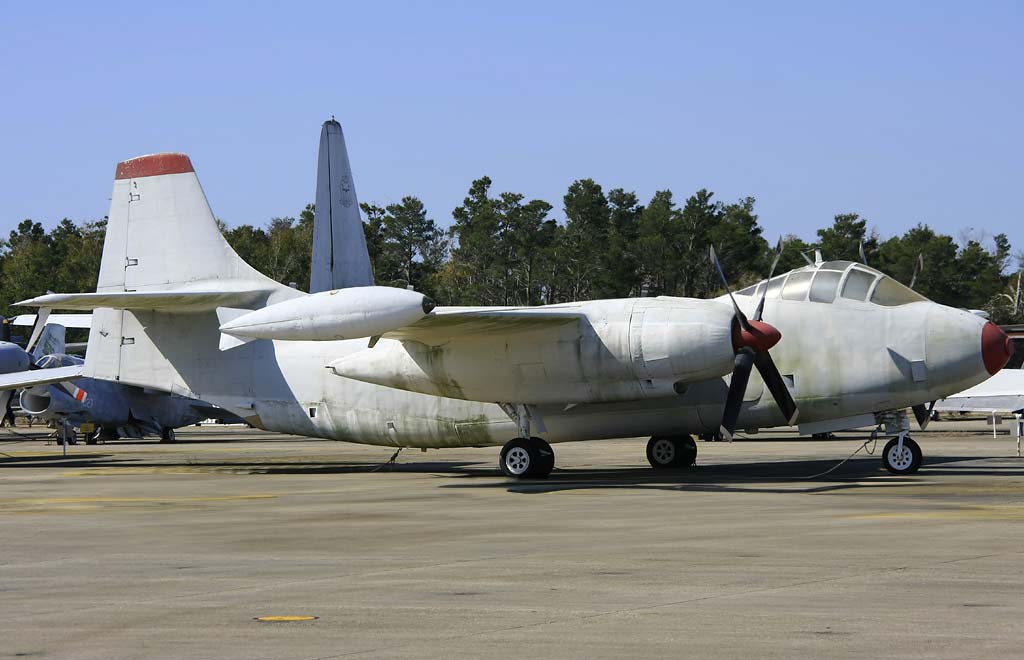The North American AJ Savage was a hybrid-powered bomber designed for the U.S. Navy, pioneering in combining jet and piston engines.
The North American AJ Savage was a groundbreaking aircraft developed in the late 1940s for the U.S. Navy. As a carrier-based bomber, it was unique for its time, integrating both piston and jet engines – a rare hybrid configuration. Designed primarily for nuclear weapon delivery, it played a crucial role in the evolution of naval aviation, embodying the transition from propeller-driven to jet-powered aircraft. Although it had a relatively short service life, the Savage was pivotal in advancing carrier aviation technology and tactics, especially in the realm of nuclear deterrence during the early Cold War years.
The North American AJ Savage was an innovative aircraft that marked a transition in naval aviation technology during the post-World War II era.
History of the Development of the North American AJ Savage
In the context of the emerging Cold War, the United States Navy sought a carrier-based bomber capable of delivering nuclear weapons, a necessity for maintaining strategic parity with the Soviet Union. This requirement led to the development of the North American AJ Savage, a project launched by North American Aviation in response to a Navy contract.
The development of the Savage was driven by the need for a versatile, long-range aircraft that could operate from aircraft carriers, which were becoming central to U.S. naval strategy. The design goals included the ability to carry large payloads, including atomic bombs, over considerable distances.
The AJ Savage first flew on July 3, 1948, marking a significant milestone in naval aviation. It did not have a NATO nickname, as it was a U.S. Navy-specific platform.
Design of the North American AJ Savage
The AJ Savage’s design was notable for its hybrid propulsion system, combining two Pratt & Whitney R-2800 radial piston engines with an Allison J33 turbojet housed in the rear fuselage. This combination allowed for flexible operations, leveraging the efficiency of piston engines for cruising and the power of the jet engine for high-speed flight and heavy payloads.
The aircraft was approximately 63 feet (19.2 meters) long with a wingspan of 71 feet (21.6 meters). It was constructed using aluminum alloys, which provided a balance between structural strength and weight efficiency.
One of the significant design challenges was integrating the dual propulsion system in a manner that maintained aerodynamic efficiency and operational safety. The Savage also featured folding wings, a critical feature for carrier-based aircraft.

Performance of the North American AJ Savage
Powered by its unique engine configuration, the AJ Savage had a top speed of about 471 mph (758 km/h) and an operational ceiling of 37,600 feet (11,460 meters). The aircraft’s range was approximately 1,700 miles (2,735 kilometers), enabling it to execute long-range missions.
In comparison to other carrier-based aircraft of the time, such as the Douglas A-1 Skyraider, the Savage was significantly faster and had a greater payload capacity, though it lagged in maneuverability and operational simplicity.
Military Use and Combat of the North American AJ Savage
The AJ Savage was equipped with various armaments, including internal bomb bays capable of carrying nuclear or conventional bombs. It was primarily intended for strategic bombing roles and as such, did not see direct combat in conventional conflicts.
The aircraft served prominently in the U.S. Navy’s strategic nuclear deterrence role during the early Cold War years. It participated in various exercises and operations, demonstrating the Navy’s capability to deliver nuclear weapons from carriers.
The Savage was never sold to other countries, remaining exclusive to the U.S. Navy. It was in service until the early 1960s, eventually being replaced by more advanced, all-jet designs like the Douglas A-3 Skywarrior, which offered superior performance and greater operational flexibility.
The North American AJ Savage was a crucial step in the evolution of naval aviation, bridging the gap between piston-engined and jet-powered aircraft on aircraft carriers. Its innovative design and operational capabilities played a significant role in the U.S. Navy’s strategic posture during a pivotal period in Cold War history. While its service life was relatively brief, the Savage set the stage for subsequent developments in carrier aviation and nuclear deterrence strategies.
Back to the Bombers section.